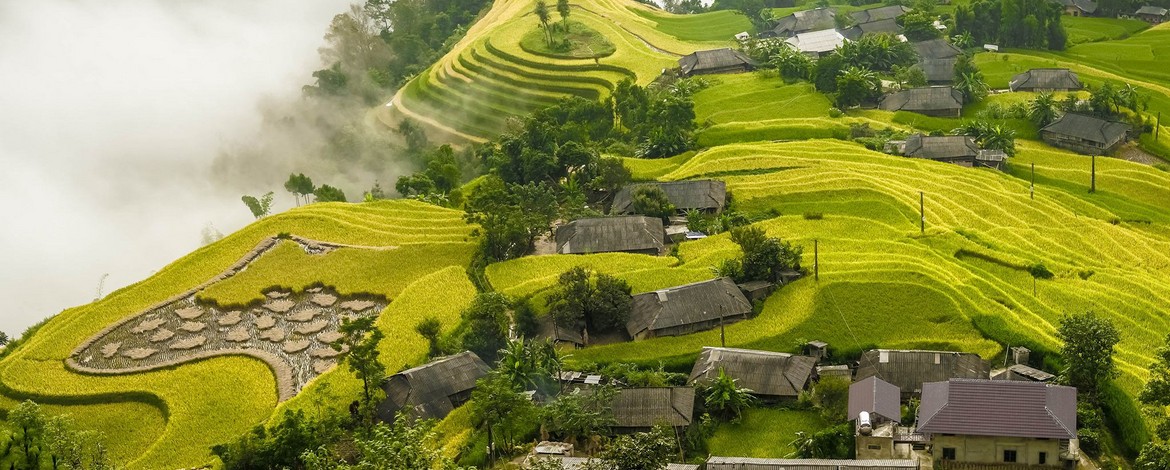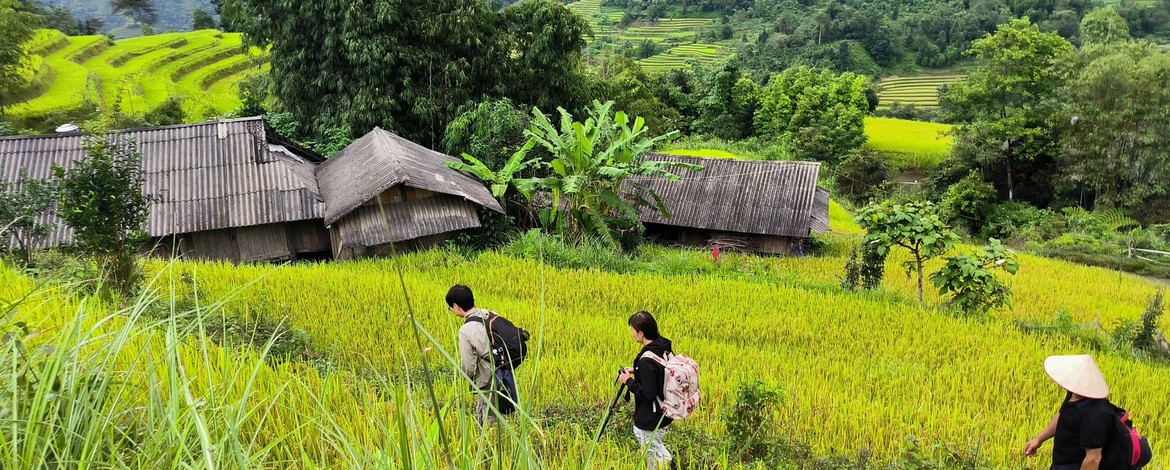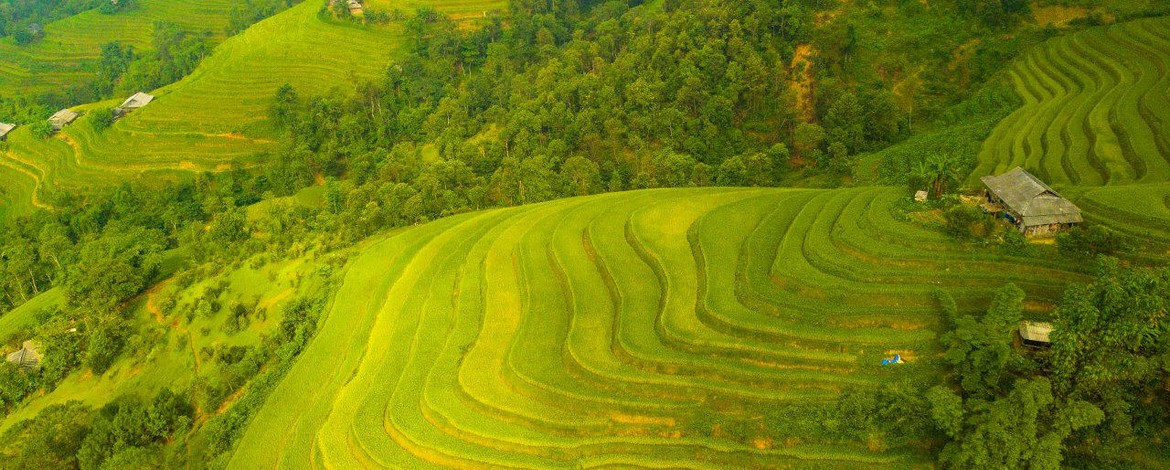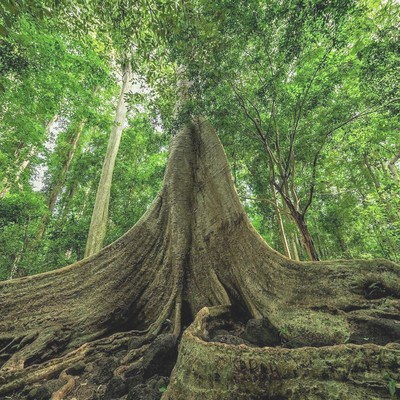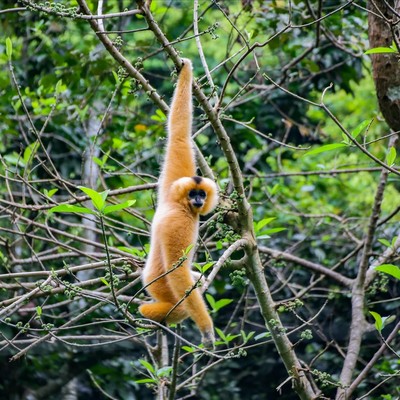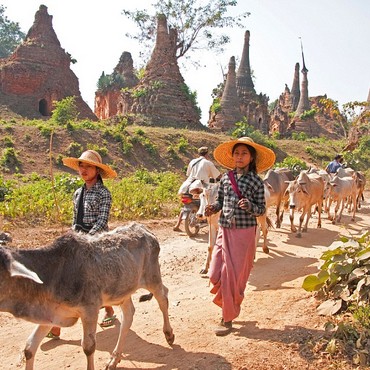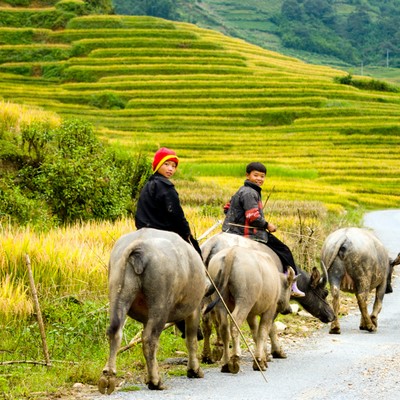Details
Embark on a breathtaking 4-day journey from Hanoi to the remote landscapes of Hoang Su Phi and Ha Giang, where nature and culture meet. Trek through dramatic rice terraces carved into mountainsides, winding trails, and quiet ethnic villages. This is Vietnam at its most raw and beautiful. You’ll explore picturesque routes lined with golden rice paddies, cross bamboo bridges, and stay in traditional stilt houses hosted by local families. Along the way, meet members of ethnic minority groups like the Red Dao, Tay, and Hmong, and experience their rich traditions and hospitality firsthand. Whether you're navigating rugged paths or relaxing with a warm bowl of pho after a day's hike, this tour offers an unforgettable mix of scenery, culture, and adventure.
Intinerary
You’ll be picked up from your hotel in Hanoi at 8:00 A.M. and travel northeast along the highway toward Lao Cai, with a few rest stops along the way to stretch and refresh. By early afternoon, we’ll reach the highland town of Bac Ha and enjoy a delicious local lunch. Afterward, we’ll explore the H’mong King’s Palace—once the residence of Hoang A Tuong—an architectural gem blending Asian and European influences from the early 20th century. In the late afternoon, we’ll set out on a scenic 7–10 km trek along mountain trails behind the palace, offering sweeping views of the surrounding highlands and a tranquil immersion in nature. We’ll return to Bac Ha for dinner and spend the night at a cozy local lodge.
The journey from Bac Ha to Phung Village offers an immersive experience into the raw, untouched beauty of Vietnam’s northern highlands. Leaving behind the bustle of Bac Ha, the road winds through a dramatic mountain landscape where each curve reveals a new perspective—misty valleys, cascading hillsides, and the occasional glimpse of traditional stilt houses tucked into the folds of the land. Along the way, brief stops in small ethnic villages provide not only a chance to stretch but also to engage with the quiet rhythms of local life.
After approximately three hours of zigzagging through the mountains, we arrive at a modest local restaurant for a well-deserved lunch. The meal is a welcoming taste of regional cuisine—simple, fresh, and deeply satisfying. It also serves as the final moment of rest before we embark on the next leg of the journey: a trek through some of the most scenic terrain in Ha Giang province.
The trail to Phung Village stretches between 7 and 10 kilometers and demands a fair level of physical effort. The path is narrow and often steep, carved into hillsides and flanked by dense foliage. But with each step comes a reward: breathtaking panoramic views of layered rice terraces that seem to float in the clouds, and herds of La Chi buffalo grazing leisurely in the high pastures. The silence of the mountains is only broken by birdsong or the distant call of a herder, heightening the sense of being far from the modern world.
Phung Village itself is a hidden gem—remote, serene, and culturally rich. Home to the La Chi people, one of Vietnam’s smallest and most reclusive ethnic minority groups, the village stands as a living testament to traditional highland life. The La Chi reside near the northern border of Vietnam, in areas often inaccessible by modern transportation. Their homes are typically built from local wood and roofed with palm leaves, reflecting a lifestyle that has remained largely unchanged for generations.
Visitors to Phung Village are welcomed with quiet hospitality. While the La Chi are reserved by nature, they take pride in their customs—especially their handwoven textiles, herbal remedies, and agricultural practices. There is a spiritual connection between the people and the land they inhabit, a rhythm of life that aligns with the cycles of nature and ancestral knowledge.
In an era where modernization is swiftly changing even the most remote corners of the globe, Phung Village offers a rare and invaluable perspective. It’s not just a destination—it’s a journey into the heart of cultural resilience and natural splendor. For those seeking an experience that goes beyond sightseeing, the path from Bac Ha to Phung Village is an unforgettable chapter in the story of Vietnam’s northern frontier.
After waking up to the quiet charm of the northern Vietnamese highlands, we begin our day with a hearty, home-cooked breakfast at our homestay. The warm hospitality and rustic comforts of the stilt house—a shared space for multiple generations—offer a glimpse into the enduring rhythms of mountain life. With our bags packed and spirits high, we set out on foot to explore the nearby villages of the La Chi community.
The La Chi people, one of Vietnam’s lesser-known ethnic groups, are instantly recognizable by the women’s jet-black teeth—a traditional symbol of beauty and fidelity. Their radiant smiles and welcoming nature leave a lasting impression. As we meander through their villages, we pass handwoven fabrics drying in the sun, vibrant textiles dyed with natural pigments, and rice laid out to dry in wide, open courtyards. Women sit together weaving under shaded porches, while children play nearby and elders tend to chores, all beneath the shelter of wooden stilt houses that have stood for generations.
For about two hours, we walk along village paths and across terraced rice fields, surrounded by green hills and the quiet pulse of daily life. The trail leads us through the heart of the community, offering intimate moments of cultural connection and stunning natural beauty.
After the morning trek, we climb into our vehicle and drive toward Thong Nguyen—a region often referred to as the “terraced rice plateau” due to its dramatic landscape of layered rice paddies carved into steep mountain slopes. These terraces form a patchwork of green, gold, and brown depending on the season, cascading down the hillsides in mesmerizing symmetry.
We break for lunch at a small local restaurant, enjoying regional flavors that reflect the area’s agricultural roots. In the afternoon, our journey continues with a longer trek through the Nam Hong area, a peaceful stretch known for its vibrant rice terraces and serene village life. Over the course of 10 to 12 kilometers, we pass more Dao and Tay settlements, crossing footbridges, forested trails, and narrow farm tracks that reveal new vistas at every turn.
As the sun dips behind the hills, we arrive at our final stop for the day—a traditional home belonging to a Dao ethnic family. Known for their intricately embroidered clothing and ceremonial traditions, the Dao people are proud keepers of their heritage. Tonight, we share a meal with our hosts and enjoy the warmth of their mountain hospitality. It’s a well-earned rest, surrounded by the quiet of the highlands and the comfort of community.
We begin the day with a heartfelt final breakfast shared with our host family, savoring one last moment of tranquility and connection in the village. The sounds of morning stir gently in the background—roosters crowing, firewood crackling, and soft conversations in the local dialect—offering a vivid farewell to the rhythm of rural life.
Our day’s adventure takes us on a 5–7 kilometer trek, a journey of about three hours, along a less-traveled path through the highland villages around Thong Nguyen. The initial ascent—a steady 30-minute climb—leads us up through misty forest edges and past hillside homes. As we gain elevation, the landscape gradually opens, revealing a tapestry of tea plantations, terraced rice paddies, and mountain slopes that stretch toward the horizon. It’s a serene yet dramatic reminder of the region’s natural beauty and the quiet resilience of those who call it home.
This path, though remote, pulses with life. We pass villagers on foot, carrying baskets of foraged goods, tending to fields, or herding livestock. These fleeting encounters offer a candid glimpse into daily life—unposed and profoundly human. With each step, the modern world feels a little farther away.
Midway through the trek, we pause for lunch with another local family. Their warm hospitality mirrors the spirit we’ve encountered throughout our journey—home-cooked dishes, smiles exchanged across language barriers, and a genuine willingness to share both food and stories. It’s more than a meal; it’s a final cultural embrace before our return to city life.
After lunch, we complete the trek and meet our driver for the journey back to Hanoi. The van ride is quiet at first, as many of us reflect on the experience—on the stories we’ve heard, the paths we’ve walked, and the people we’ve met. Occasional rest stops give us time to stretch and admire the changing scenery one last time as we descend from the highlands.
We arrive back at your hotel in Hanoi by early evening. As the journey concludes, we say our goodbyes to the guide, the driver, and the companions who’ve shared this memorable path. Though we leave the mountains behind, the spirit of the highlands—its people, its landscapes, and its quiet strength—stays with us long after we return.

